Auteur/autrice : C&A HD
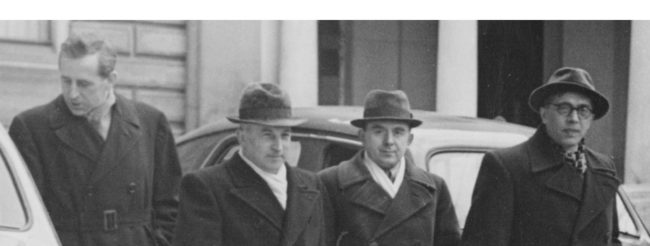
Dmitry Tsyganov, violon I, Vassily Shirinsky, violon II, Vadim Borisovsky, alto I, Mikhaïl Terian, alto II et Sergei Shirinsky, violoncelle
Enregistré les 23 janvier & 6 février 1952
Voici une grande interprétation d’un chef-d’œuvre absolu de Mozart, le Quintette en sol mineur K.516. Aux membres du Quatuor Beethoven, s’est joint Mikhaïl Terian pour former un pupitre d’alto de très haut niveau, si important dans cette œuvre.
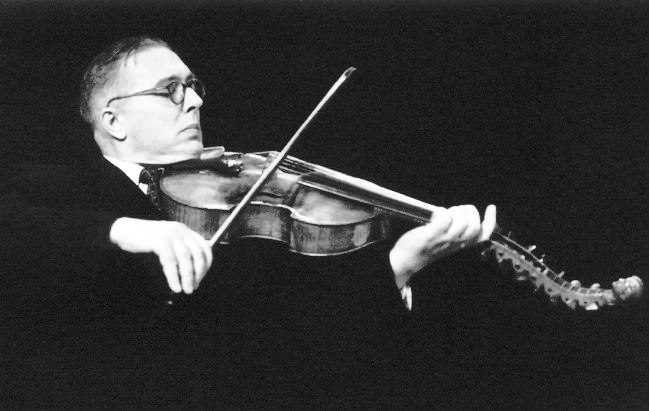
Vadim Borisovsky
Vadim Borisovsky (1900-1972) était considéré comme un des fondateurs de l’école russe d’alto et en tant qu’interprète et éditeur, il a contribué à en élargir le répertoire, notamment par de nombreuses transcriptions. Durant les années 20, avec l’aide de Paul Hindemith, il a dressé le catalogue complet des œuvres écrites pour alto et viole d’amour. Il jouait d’un instrument de grande taille (47,5 cm) du luthier Gaspara da Salò. Il a enseigné au Conservatoire de Moscou à partir de 1925. Parmi ses élèves, on notera bien sûr Rudolf Barshaï, mais aussi Fyodor Druzhinin qui lui succèdera au pupitre du Quatuor Beethoven, Dmitry Shebalin, l’altiste du Quatuor Borodine, et pour une courte période, Yuri Bashmet.
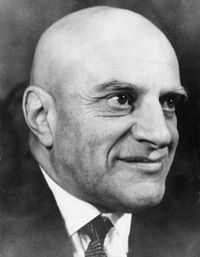
Mikhaïl Terian
Mikhaïl Terian (1905-1987) était à l’époque un altiste renommé, qui enseignait au Conservatoire de Moscou (classe d’alto depuis 1946 et de quatuor depuis 1935). En 1925, il a été un des co-fondateurs du Quatuor Komitas. Il a rejoint ensuite le Quatuor Oïstrakh. Il a aussi dirigé l’Orchestre du Conservatoire de Moscou et il existe d’ailleurs sous sa direction un enregistrement du Concerto de Beethoven Op.61 avec David Oïstrakh (publié par Moscow Conservatory Records SMC CD 0021).
Melodiya a édité deux fois l’enregistrement du Quintette K.516 sous forme de microsillon. Le première parution (1960) occupait les deux faces d’un disque 25 cm (D-8145/46), et le premier mouvement était donné avec les reprises (durée 12’45):
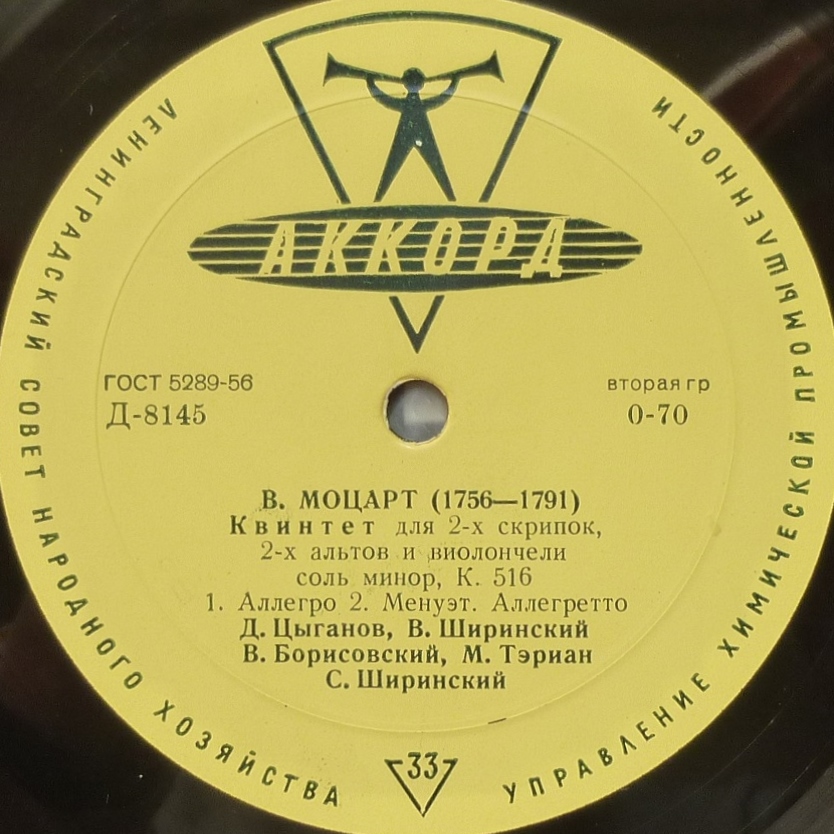
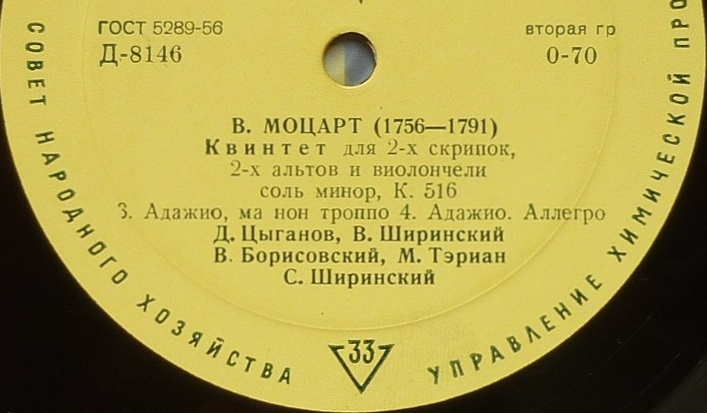
Par contre, pour la réédition de 1978, l’enregistrement a été gravé sur une face (M10-40859) d’un 33t. 30 cm, l’autre face étant occupée par le Quintette Op.29 de Beethoven avec les mêmes interprètes. La durée du premier mouvement, privée de ses reprises, se trouvait ainsi réduite presque de moitié à 6’40.
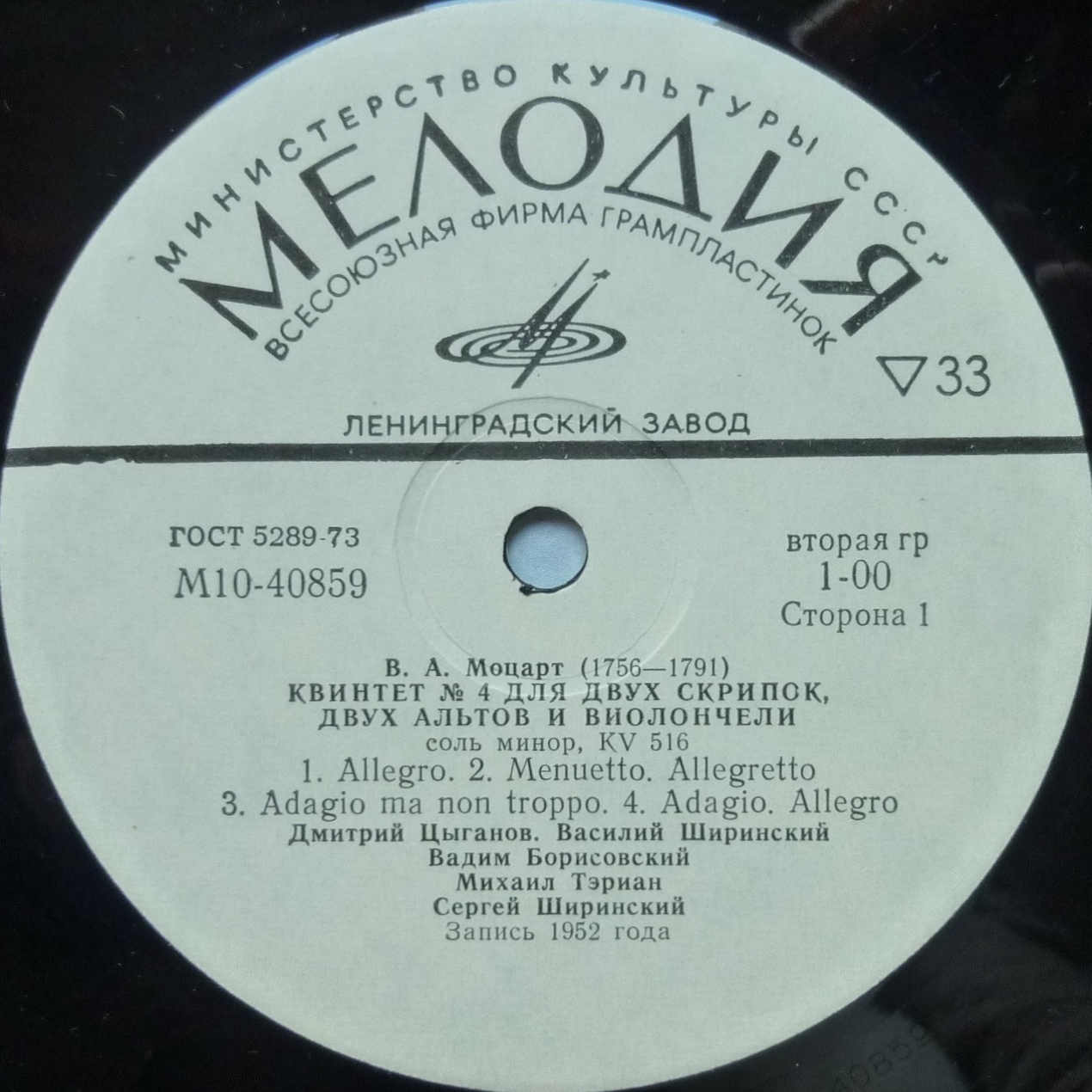
Ceci n’est pas sans conséquences, car cette œuvre repose sur une accumulation de tension avec des mouvements de plus en plus lents (Allegro – Allegretto – Adagio ma non troppo – Adagio), l’Adagio qui ouvre le dernier mouvement enchaînant « attacca » avec l’Allegro final libérateur. Dans la parution originale, l’accumulation de tension dès le premier mouvement est beaucoup plus importante, et la perception des mouvements suivants et donc de l’ensemble de l’œuvre n’est plus du tout la même.
Les deux reports, respectivement de 1960 et 1978, sont proposés en téléchargement.
I – Plages 01 à 04: Version avec les reprises dans le premier mouvement (33t. 25 cm D-8145/46).
II – Plages 05 à 08: Version sans les reprises dans le premier mouvement (33t. 30 cm M10-40859).
__________________
Beethoven Quartet-M.Terian – Mozart Quintet K516
Dmitry Tsyganov, violin I, Vassily Shirinsky, violin II, Vadim Borisovsky, viola I, Mikhaïl Terian, viola II & Sergei Shirinsky, cello
Recorded January 23 & February 6, 1952
Here is a great performance of a major masterpiece by Mozart, namely the G minor Quintet K.516. With the members of the Beethoven Quartet, there is Mikhaïl Terian to form a very high level viola section, so important in this work.
Vadim Borisovsky (1900-1972) was considered as one of the founders of the Russian viola school, and as a performer as well as an editor, he contributed to broadening its repertoire, especially by way of many transcriptions. During the 20s, with Paul Hindemith’s contribution, he made a complete catalog of the works written for the viola and for the viola d’amore. He played on a very large viola (47.5 cm) built by Gaspara da Salò. He taught at the Moscow Conservatory since 1925. Among his pupils, were of course Rudolf Barshaï, but also Fyodor Druzhinin who was his successor when he left the Beethoven Quartet, Dmitry Shebalin, the viola player of the Borodin Quartet, and for a short period, Yuri Bashmet.
Mikhaïl Terian (1905-1987) was a reknowned viola player, who taught at the Moscow Conservatory (viola since 1946 and quartet since 1935). In 1925, he was one of the co-founders of the Komitas Quartet. He later joined the Oïstrakh Quartet. He has also conducted the Moscow Conservatory Orchestra and there exists under his baton a recording of Beethoven’s Concerto Op.61 with David Oïstrakh (published by Moscow Conservatory Records SMC CD 0021).
Melodiya has issued twice the recording of Quintet K.516 in the LP format. The first issue (1960) occupied both sides of a 10″ LP (D-8145/46), and the first movement was performed with the repeats (timing: 12’45).
On the other hand, for the 1978 re-issue, the recording was on but one side of a 12″ LP (M10-40859), Beethoven’s Quintet Op.29 with the same performers being on the other side. The length of the first movement, deprived of the repeats, was almost reduced by half (timing: 6’40).
This is not without drawbacks, because this works is built on an accumulation of tension with slower and slower movements (Allegro – Allegretto – Adagio ma non troppo – Adagio), the Adagio opening the last movement being played « attacca » with the liberating final Allegro. In the original issue, the accumulation of tension already present in the first movement is much more important, and the perception of the following movements and thus of the whole work is dramatically affected.
Both issues, respectively of 1960 and 1978, are available as downloads:
I – Tracks 01 to 04: Version with repeats in the first movement (33t. 25 cm 10″ LP D-8145/46).
II – Tracks 05 to 08: Version without repeats in the first movement (33t. 30 cm 12″ LP M10-40859).
Les liens de téléchargement sont dans le premier commentaire. The download links are in the first comment.
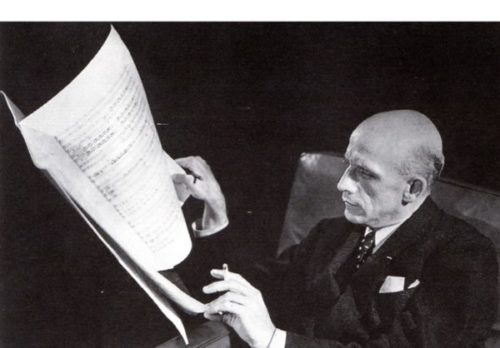
Northrop Auditorium – 6 décembre 1941
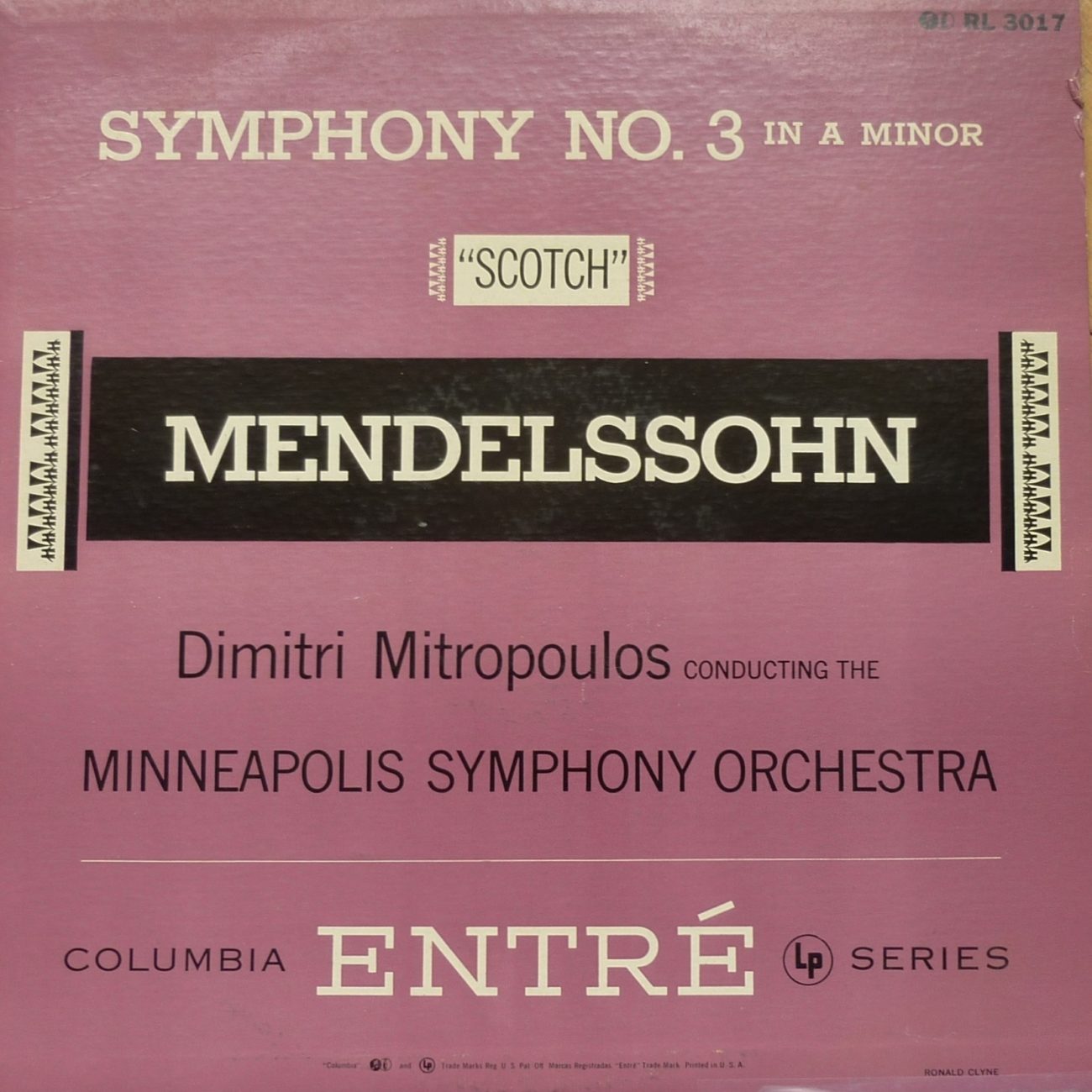
Sous la direction de Mitropoulos, nous disposons de cinq enregistrements de cette Symphonie « Ecossaise » avec quatre orchestres différents. Celui-ci est le plus ancien. Les deux suivants sont avec le New-York Philharmonic (concert du 1er novembre 1953 et enregistrement Columbia le lendemain). On connaît enfin deux captations de 1960, celle qui ouvrait le concert donné le 21 août au Festival de Salzbourg avec les Berliner Philharmoniker et celle du 24 octobre à Cologne avec le Kölner-Rundfunk Orchester.
Le présent enregistrement est un des meilleurs réalisés à Minneapolis. L’interprétation est passionnante et la prise de son (microsillon Columbia Entré RL-3017) est de fort bonne qualité, nonobstant l’acoustique de la salle, sans les problèmes de compression de dynamique rencontrés par ailleurs, notamment dans la Symphonie de Franck.

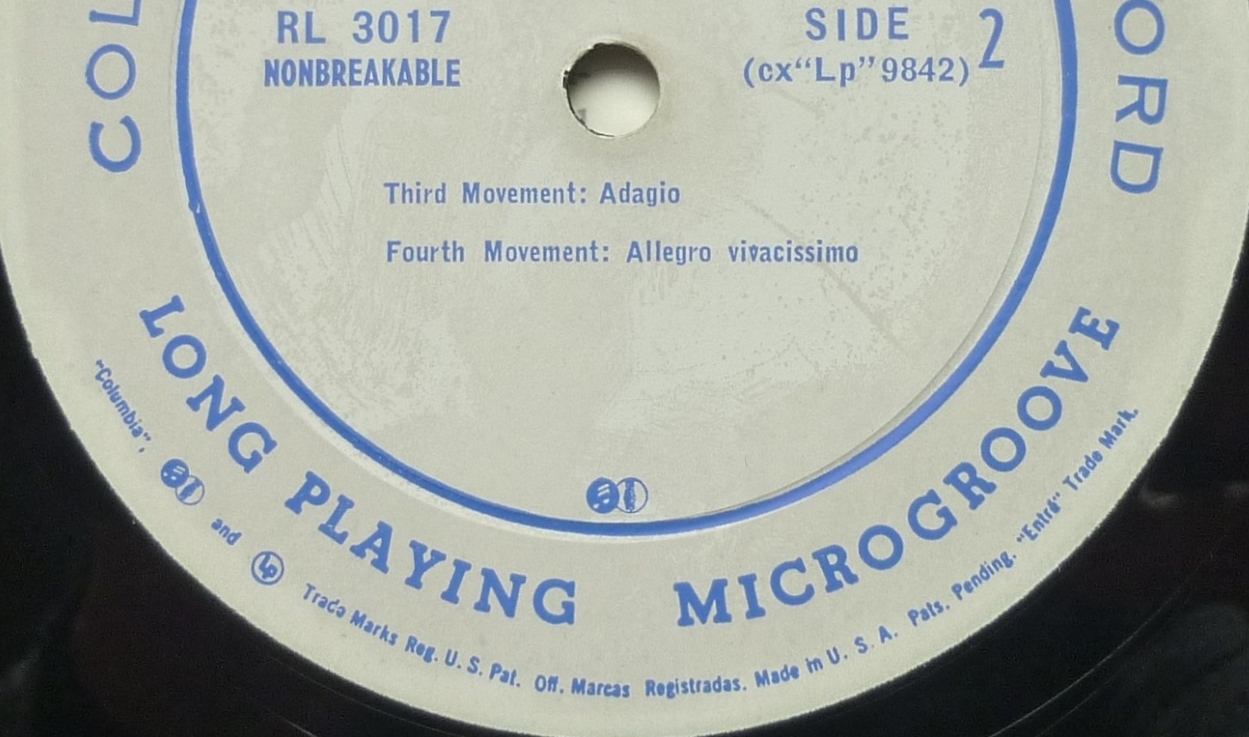
We have five recordings of this « Scotch » Symphony conducted by Mitropoulos with four different orchestras. This one is the oldest. The next two are with the New-York Philharmonic (concert given on November, 1st 1953 and a recording for Columbia the next day). Two performances from 1960 are also known, the one opening the Salzburg Festival concert given on August, 21 with the Berliner Philharmoniker and the one of October 24 in Cologne with the Kölner-Rundfunk Orchester.
The present issue is one of the best from Minneapolis. The performance is thrilling and the recording (Columbia LP Entré RL-3017) is quite good, notwithstanding the acoustics of the Auditorium, without the problems of dynamics compression that mar other recordings, such as with the Franck Symphony.
Les liens de téléchargement sont dans le premier commentaire. The download links are in the first comment.
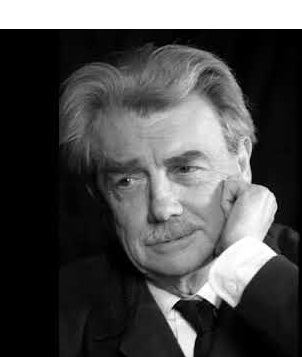
Heinrich Neuhaus, piano.
Quatuor Beethoven – IV
Membres du Quatuor Beethoven (WoO36 n°2 – Op.97) – Miron Polyakin, violon (Op.47)
_________
Quatuor WoO36 n°2: Dmitry Tsyganov, violon, Vadim Borisovsky, alto et Sergei Shirinsky, violoncelle.
Enregistré le 15 novembre 1949
_________
Trio n°7 Op. 97: Dmitry Tsyganov, violon et Sergei Shirinsky, violoncelle.
Enregistré les 21 & 28 février et le 10 mars 1951 (Prise de son: Vasily Fedulov)1
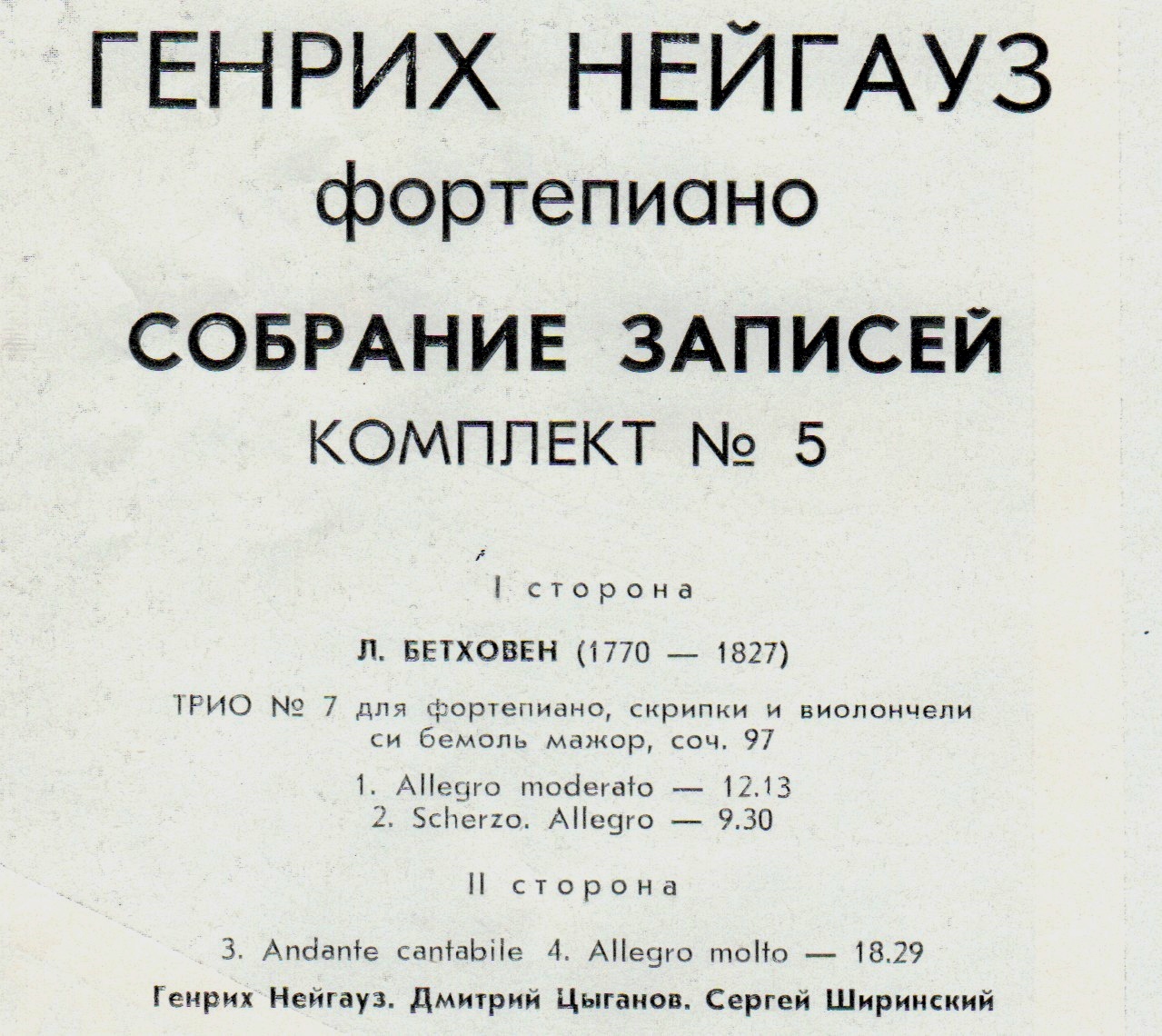
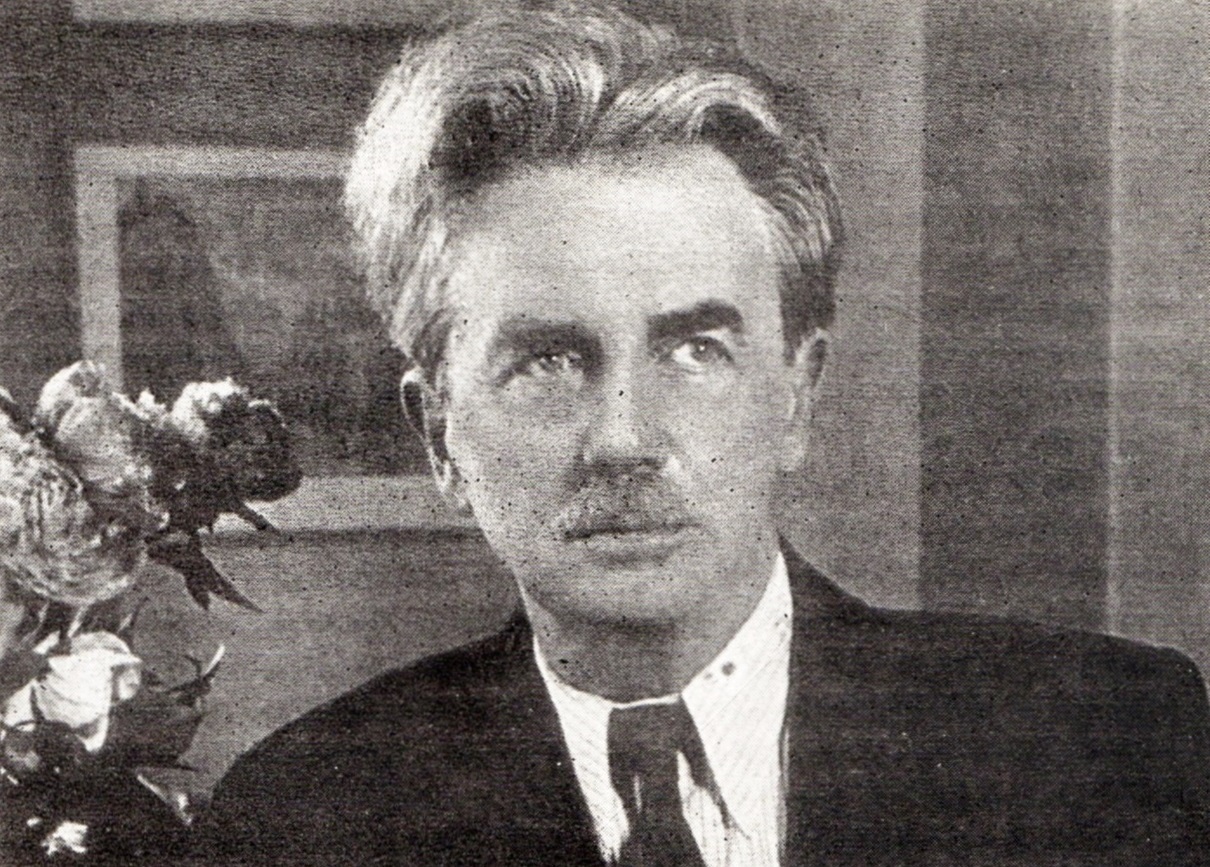
Heinrich Neuhaus en 1950
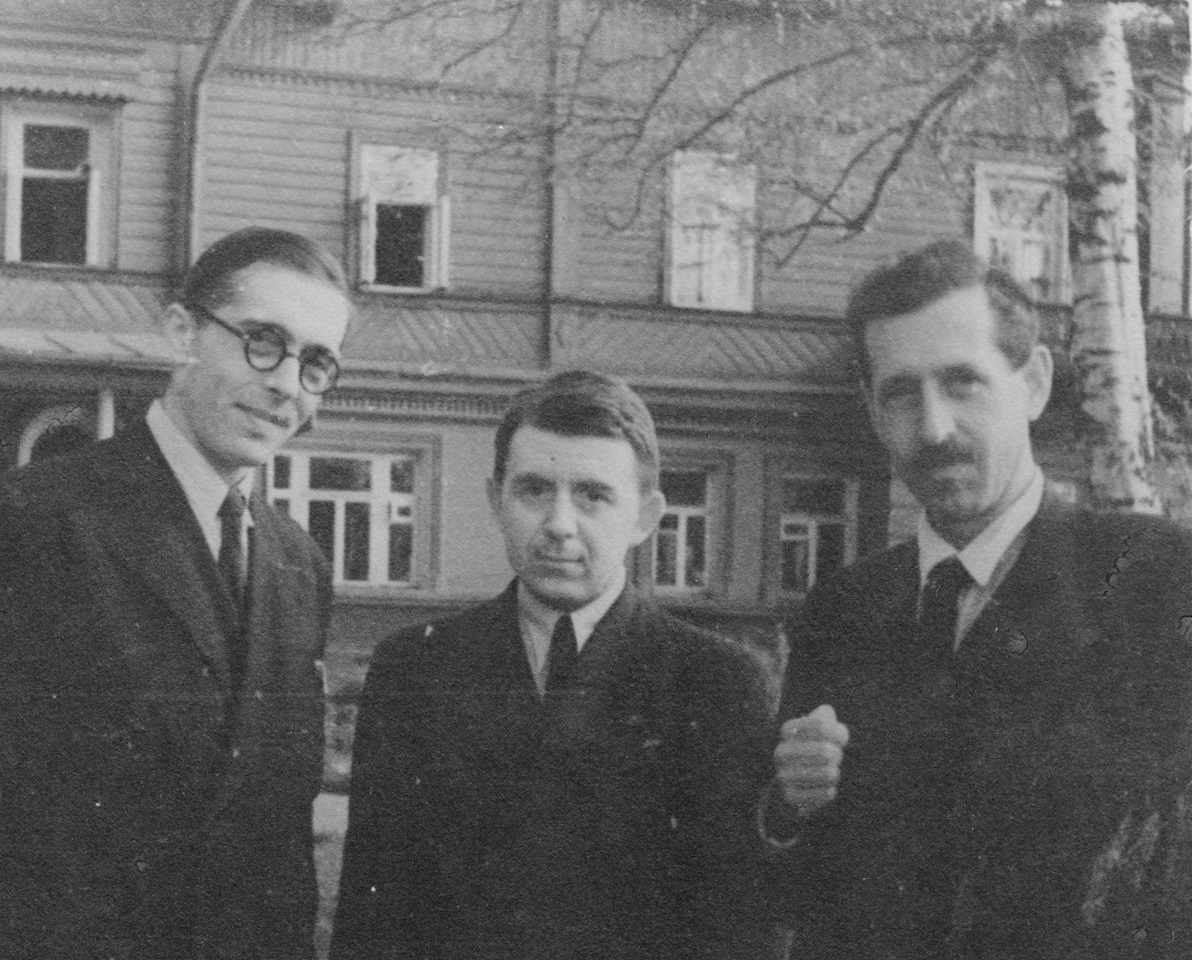
Vadim Borisovsky, Dmitry Tsyganov & Sergei Shirinsky en 1943
___________________________
Sonate n°9 Op. 47 – I (Adagio sostenuto Presto): Miron Polyakin, violon. Enregistré en 19382

Miron Polyakin
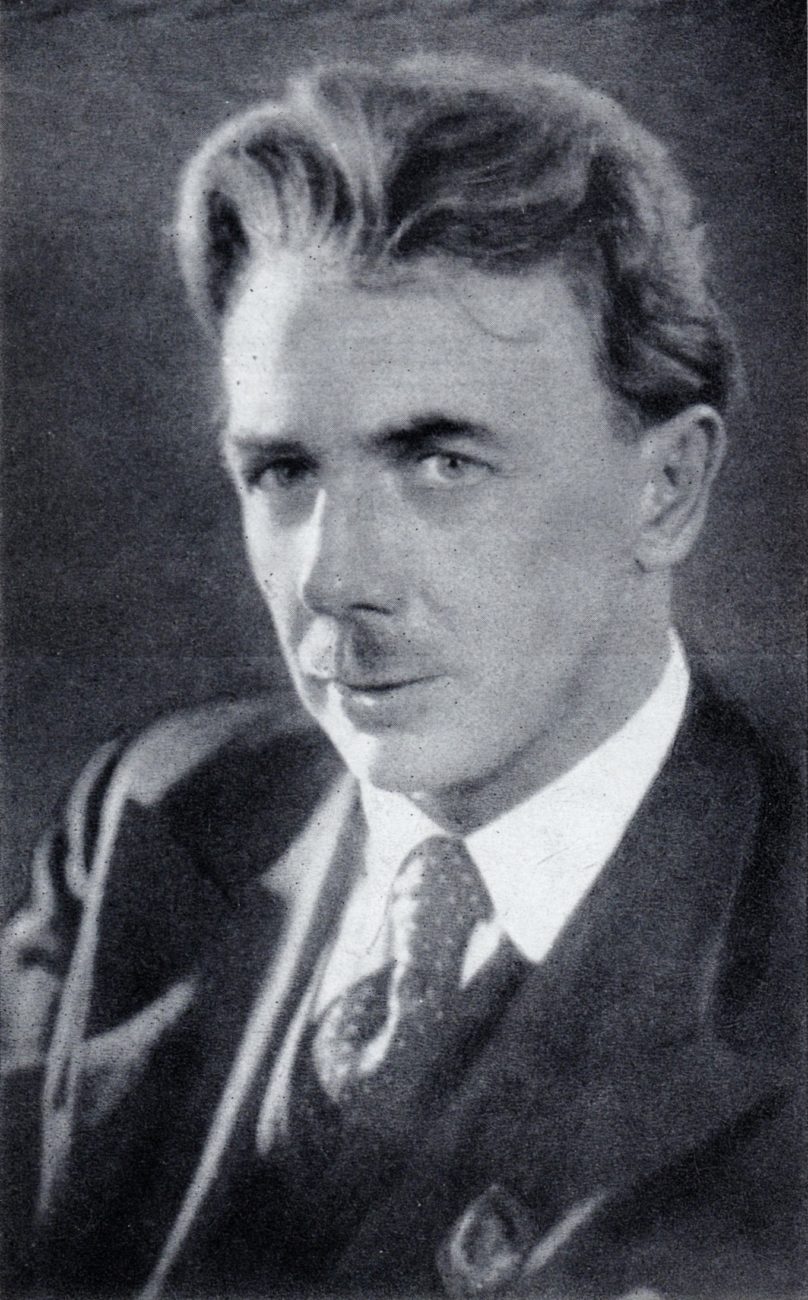
Heinrich Neuhaus en 1940
Voici les enregistrements publiés de la Musique de Chambre de Beethoven auxquels Heinrich Neuhaus (1888-1964) a pris part.
Comme entrée en matière, le Quatuor WoO36 n°2 est une œuvre très agréable, fort bien interprétée.
L’enregistrement suivant, consacré au célébrissime Trio Op.97 (« Erzherzog » ou « Archiduc ») n’a bizarrement pas été réédité depuis l’intégrale des enregistrements d’Heinrich Neuhaus parue en microsillons sous forme de 5 coffrets en 1980. Il s’agit pourtant d’une magnifique interprétation qui trouve un point d’équilibre entre le classicisme de Neuhaus et la fougue des deux membres du Quatuor Beethoven.
Pour le premier mouvement de la Sonate à « Kreutzer » Op.47, il n’est plus question de classicisme. Tout au long de cette exécution, l’engagement des interprètes est maximal. L’enregistrement a été probablement effectué, comme c’était assez souvent le cas en URSS dans les années 30, sur une piste sonore optique de film (un procédé analogue au « Selenephon » de la Radio autrichienne RAVAG), et le son présente des distorsions importantes et une dynamique assez compressée, mais sa définition est suffisante pour restituer cette prestation hors normes.
Le violoniste Miron Polyakin (1895-1941), après ses études avec Leopold Auer a fait une carrière internationale entre 1917 et 1926. Après son retour dans son pays d’origine, où il a donné de nombreux concerts, il a enseigné à partir de 1928 au Conservatoire de Léningrad, puis à partir de 1936 au Conservatoire de Moscou jusqu’à son décès prématuré en 1941 dans le train au retour d’une tournée en Crimée. Cet enregistrement incomplet reste le seul témoignage connu du duo qu’il formait avec Neuhaus. Certes, Polyakin a laissé en 1938/39 un enregistrement intégral de cette Sonate (que l’on peut trouver sur le CD Symposium 1300 – The Great Violonists volume XIV), mais avec un pianiste (Abram Dyakov) qui est peut-être plus un très bon accompagnateur qu’un véritable partenaire et l’interprétation, par le choix d’une conception beaucoup moins tendue, presque statique, est loin d’égaler celle-ci .
1 Dates d’enregistrement des Mouvements I à IV: I: 21 février; II: 21 & 28 février; 10 mars; III: 28 février; IV 28 février & 10 mars 1951 (informations fournies par Dmitry Maksimov). Remise au ton: Charles Eddi.
2 Remise au ton: Charles Eddi.
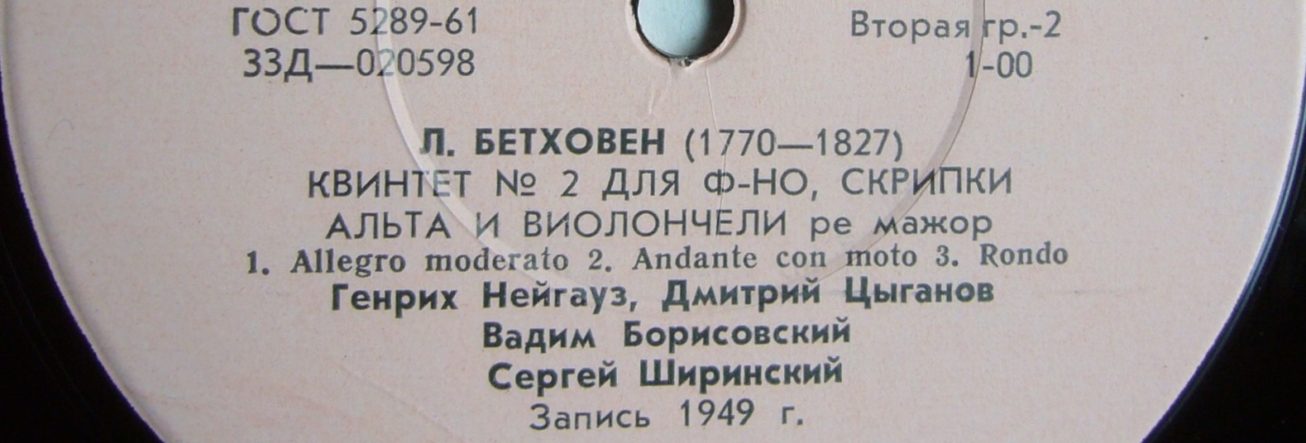
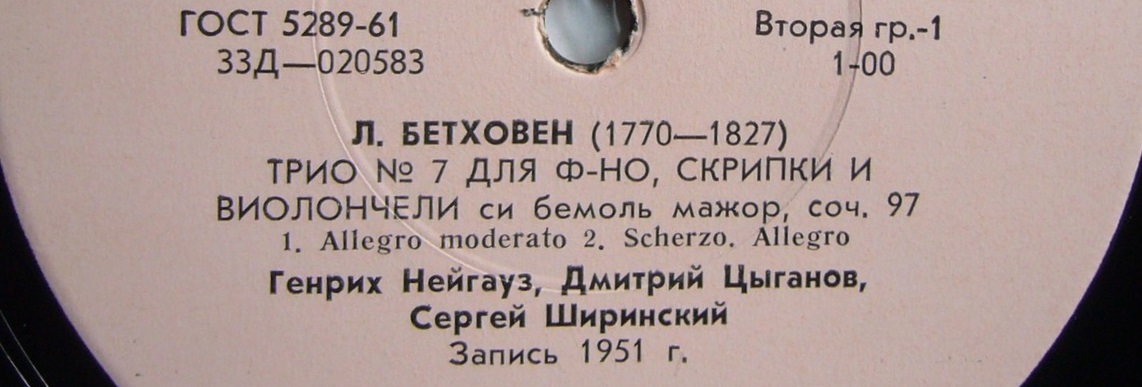
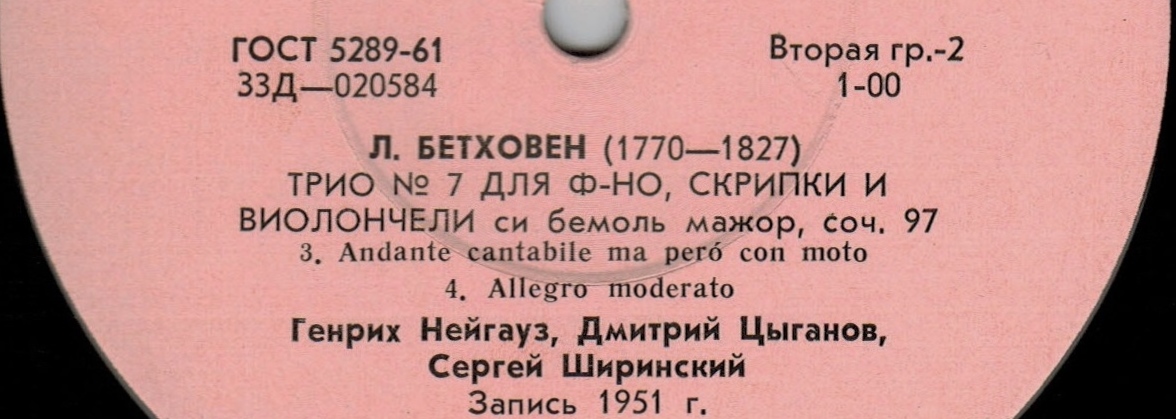
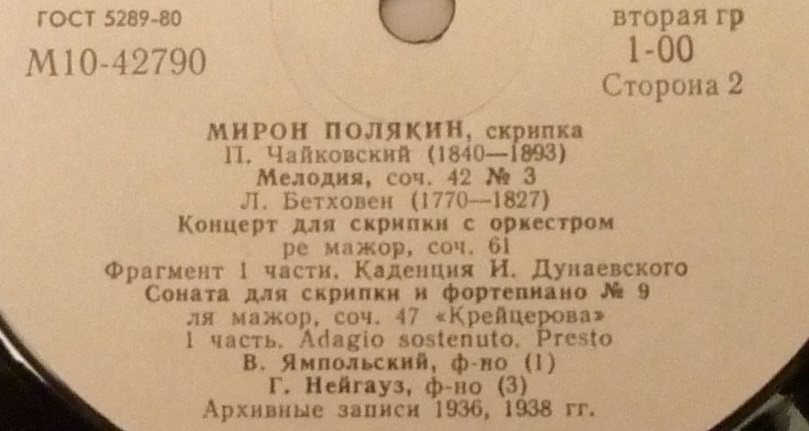
Here are the published recordings of Beethoven’s Chamber Music in which Heinrich Neuhaus (1888-1964) took part.
To start with, the Quartet WoO36 n°2 is a very agreeable work, very well played.
The next recording is the universally known Trio Op.97 (« Erzherzog » ou « Archduke ») but it has strangely never been re-issued since 1980 in Heinrich Neuhaus’ complete recordings on 5 LP Albums. It is however a magnificent performance which finds a balance between Neuhaus’ classicism and the fire of both members of the Beethoven Quartet.
In the first movement of the « Kreutzer » Sonata Op.47, classicism is no longer the point. During the whole performance, both interprets are very fully involved. It was probably recorded as it was often the case in the 30’s in USSR, on a film optical sound track (a process akin to the « Selenephon » of the Austrian Radio RAVAG), and the sound is very distorted and has rather compressed dynamics, but it has enough definition to do justice to this extraordinary performance.
Violonist Miron Polyakin (1895-1941), after studying with Leopold Auer had an international career between 1917 et 1926. After returning to his native land, where he gave many concerts, he taught since 1928 at the Leningrad Conservatory, then at the Moscow Conservatory from 1936 until his untimely death in 1941 in the train when coming back from a tour in Crimea. This incomplete recordng remains the sole known testimony of his duet with Neuhaus. Of course, Polyakin has made in 1938/39 a complete recording of this Sonata (that may be found on the Symposium CD 1300 – The Great Violonists volume XIV), but with a pianist (Abram Dyakov) who may be more a very good accompanist than a real partner, and the performance , because of the choice of a much less tense, nearly static, approach is far from matching this one.
1 Recording dates of Movements I à IV: I: 21 February; II: 21 & 28 February; 10 March; III: 28 February; IV 28 February & 10 March 1951 (informations kindly provided by Dmitry Maksimov). Pitch correction: Charles Eddi.
2 Pitch correction: Charles Eddi.
Les liens de téléchargement sont dans le premier commentaire. The download links are in the first comment.

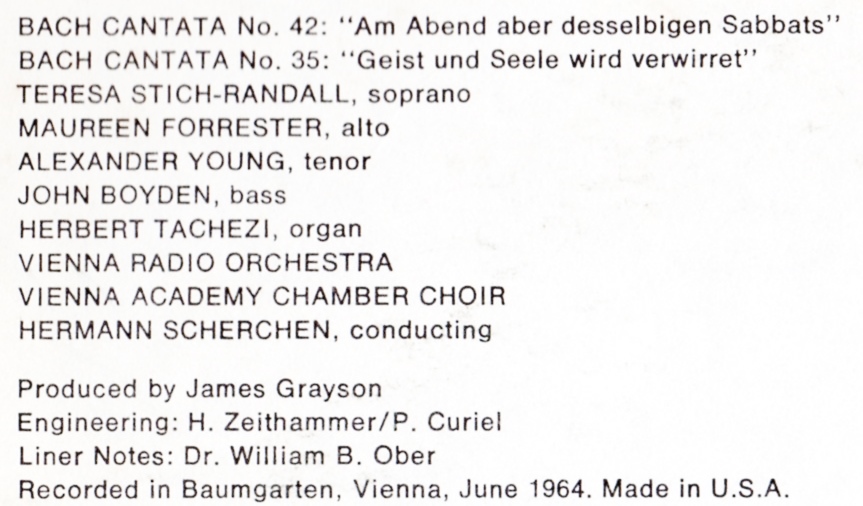
Enregistré en Juin 1964 à Vienne dans la Festsaal du Casino de Baumgarten
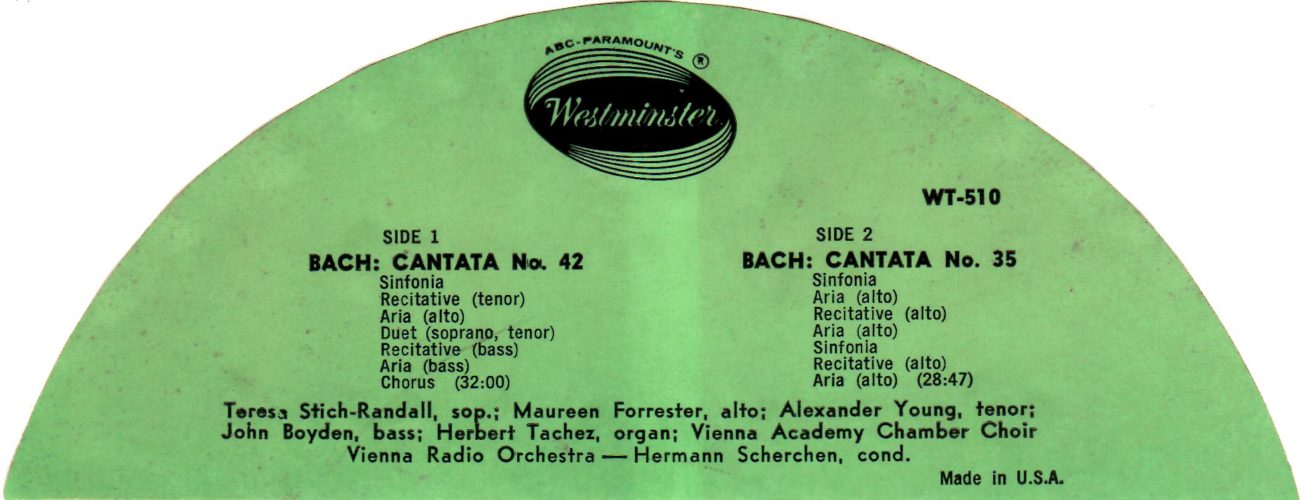
Bande 4 pistes 19 cm/s WT-510
Voici avec pour protagonistes principaux Maureen Forrester (1930-2010) et Hermann Scherchen (1891-1966) un enregistrement historique de deux Cantates de Bach BWV 35 « Geist und Seele wird verwirret » et BWV 42 « Am Abend aber desselbigen Sabbats ». Il n’est pas couramment disponible et la bande (WT-510) publiée à l’époque en constitue la meilleure source, apte à reproduire distinctement l’interprétation telle que captée en juin 1964 dans l’acoustique généreuse de la Festsaal du Casino de Baumgarten à Vienne.
Les autres interprètes sont la soprano américaine Teresa Stich-Randall (1927-2007), le ténor britannique Alexander Young (1920-2000), et la basse canadienne John Boyden (1935-1982). L’organiste autrichien Herbert Tachezi (1930-2016), qui venait juste d’intégrer le Concentus Musicus de Vienne, assure la partie d’orgue des deux Cantates, et en particulier l’importante partie solo de la Cantate BWV 35.
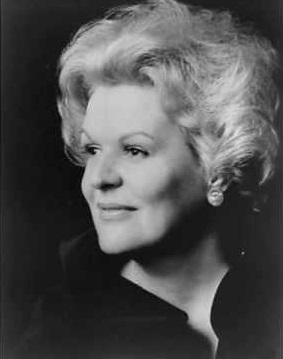
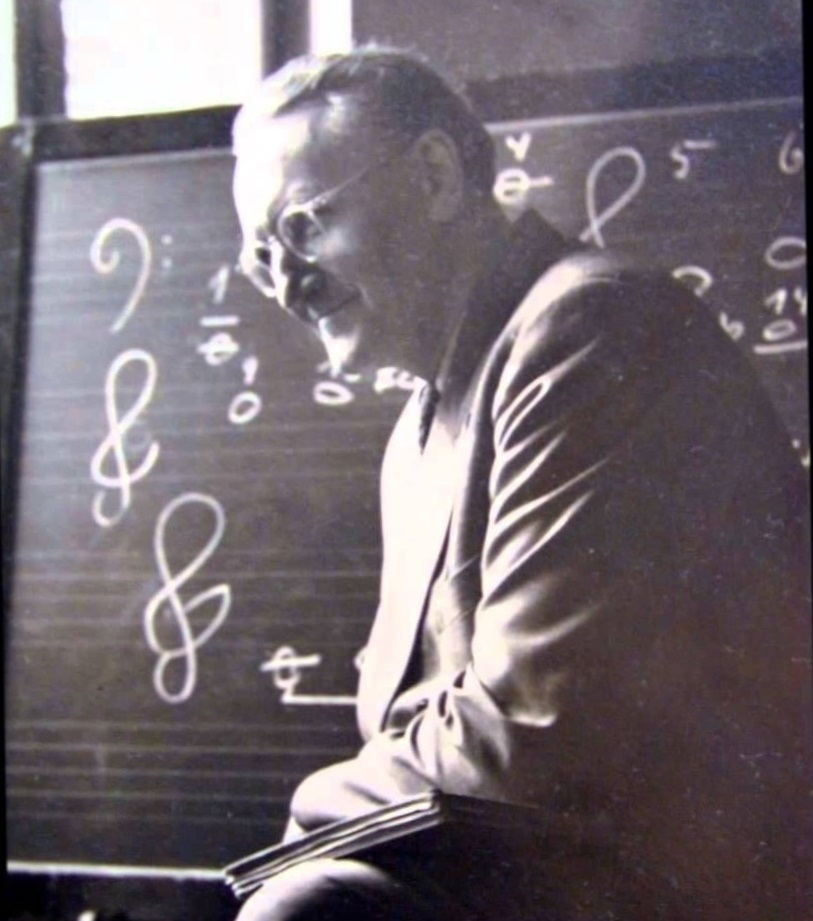
Here is, with as main performers Maureen Forrester (1930-2010) and Hermann Scherchen (1891-1966) an historical recording of two Bach Cantatas BWV 35 « Geist und Seele sind verwirret » and BWV 42 « Am Abend aber desselbigen Sabbats ». It is not readily available, and the tape (WT-510) that was then published is the best source, as it distinctly renders the interpretation as recorded in June 1964 in the opulent acoustics of the Festsaal of the Baumgarten Casino in Vienna.
The other interpreters are US soprano Teresa Stich-Randall (1927-2007), British tenor Alexander Young (1920-2000), and Canadian bass John Boyden (1935-1982). The Austrian organist Herbert Tachezi (1930-2016), who very recently joined the Concentus Musicus Wien, plays the organ part in both Cantatas, and especially the important solo part of the Cantata BWV 35.
Les liens de téléchargement sont dans le premier commentaire. The download links are in the first comment.
![]()
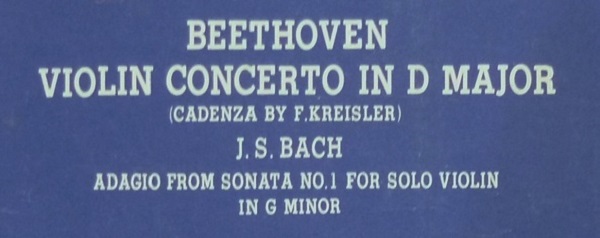

Beethoven Concerto Op. 61 – Staatskapelle Berlin
Berlin Singakademie 14-16 décembre 1926
Suite à la publication des Concertos de Beethoven et de Brahms avec Fritz Kreisler, Leo Blech et la Staatskapelle de Berlin, un contributeur de ce site (que nous remercions chaleureusement) nous a donné accès à un microsillon légendaire que nous cherchions en vain depuis longtemps. il s’agit de l’édition japonaise du Concerto de Beethoven par Toshiba – EMI sous le label Angel GR-2220. On notera qu’il s’agit d’une copie pratiquement non filtrée des 78t. d’origine qui, on le sait présentent un bruit de fond important. En particulier, les transitions entre les faces sont perceptibles, ne serait-ce qu’à cause du changement subit de couleur du bruit de surface. Par contre, la sonorité du violon de Kreisler est superbement reproduite. En complément, l’Adagio de la Sonate BWV 1001 pour violon seul de Bach qui occupait la 12ème face de l’album 78 tours d’origine.
Cet enregistrement est maintenant disponible ici:
Blech – III – Beethoven et Brahms avec Fritz Kreisler
Further to the publication of the Concertos by Beethoven and Brahms with Fritz Kreisler, Leo Blech and the » Staatskapelle Berlin », a contributor to this site (whom we thank warmly) has given us access to a legendary LP we have been searching for years. It is the Japanese Edition by Toshiba – EMI of the Beethoven Concerto under the Angel label GR-2220. It is worth noting that it is a practically unfiltered dub of the original 78rpm pressings, which, as is known have a quite high level of background noise. In particular, the side breaks are perceptible, let alone because of the sudden change in tone colour of the background noise. On the other hand, the sound of Kreisler’s violin is stunningly reproduced. As a bonus: the Adagio from Bach’s Sonata for solo violin BWV 1001 that was on the 12th side of the original 78 rpm Album.
It is now available here:
Blech – III – Beethoven et Brahms avec Fritz Kreisler



